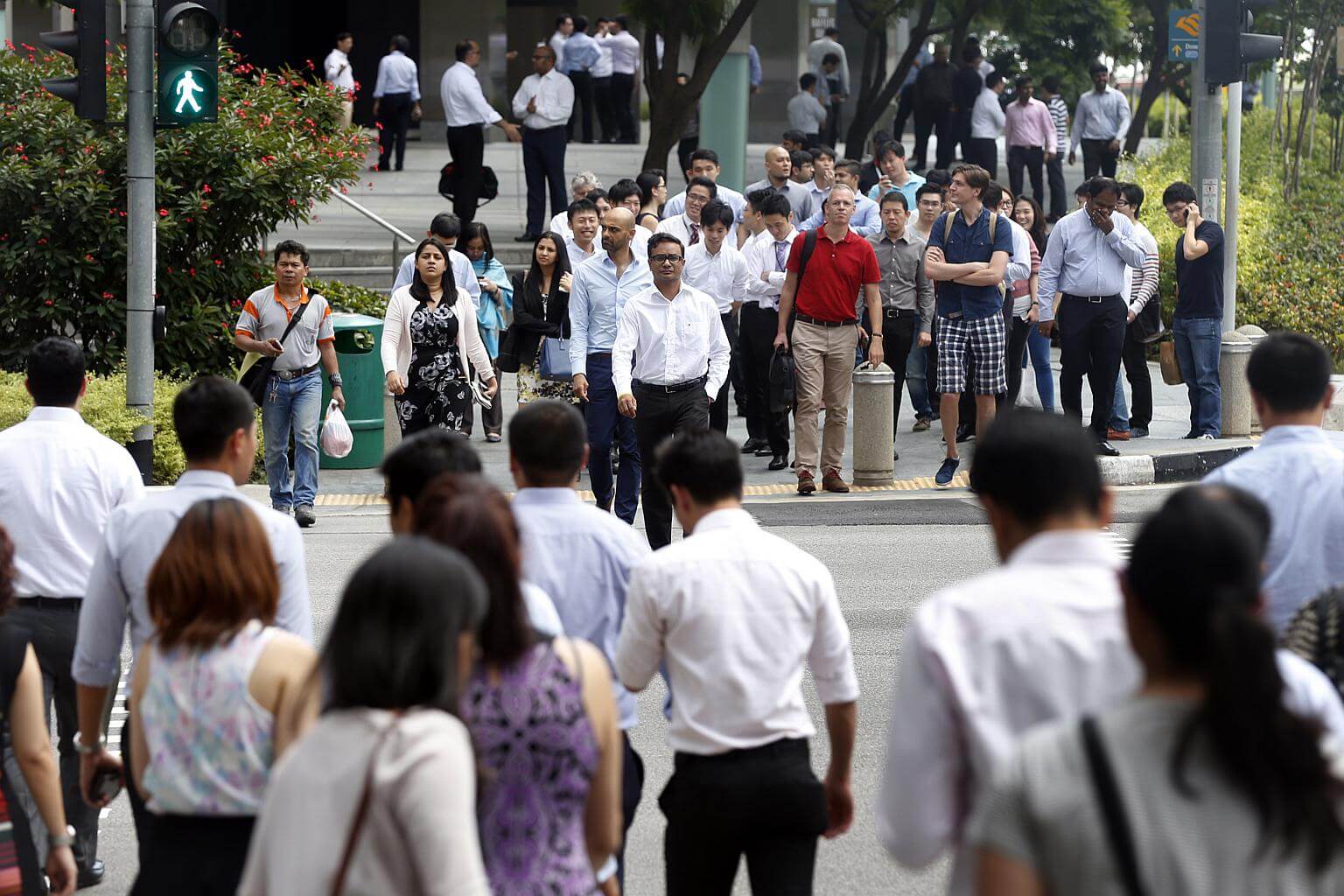Income inequality in Singapore lowest in a decade, monthly household income grows but at slower rate
Sign up now: Get ST's newsletters delivered to your inbox

Office workers crossing a junction at Raffles Quay.
PHOTO: ST FILE
Follow topic:
SINGAPORE - Income inequality in Singapore last year was the lowest in a decade, statistics released by the Government on Thursday (Feb 16) showed.
The Gini coefficient, which measures income inequality and assigns lower scores to more equal societies, went down from 0.463 in 2015 to 0.458 in 2016.
This was Singapore's lowest score in 10 years.
At the same time, the median monthly income for employed households grew from $8,666 in 2015 to $8,846 in 2016, the Department of Statistics' annual Key Household Income Trends survey showed.
That is a 2.1 per cent rise in nominal terms, or a 2.6 cent rise in real terms once inflation is taken into account.
But it was a decrease from the 4.9 per cent real growth recorded in 2015.

Households across all income groups earned more per household member last year, but at a slower rate compared to the year before.
In 2016, the average household income from work per household member in real terms grew by between 0.2 per cent and 4.3 per cent, depending on the income group.
This was lower than the range of 5.7 per cent to 10.7 per cent in 2015, and consistent with the slower wage growth in 2016 that the Manpower Ministry recently announced.
The survey also showed that households living in one-room and two-room HDB flats received more government transfers than those in larger flats or landed property.
On average, resident households in one-room and two-room HDB flats received $9,806 per household member from various government schemes in 2016. This was almost double the average of $4,168 received per household member across all housing types.

